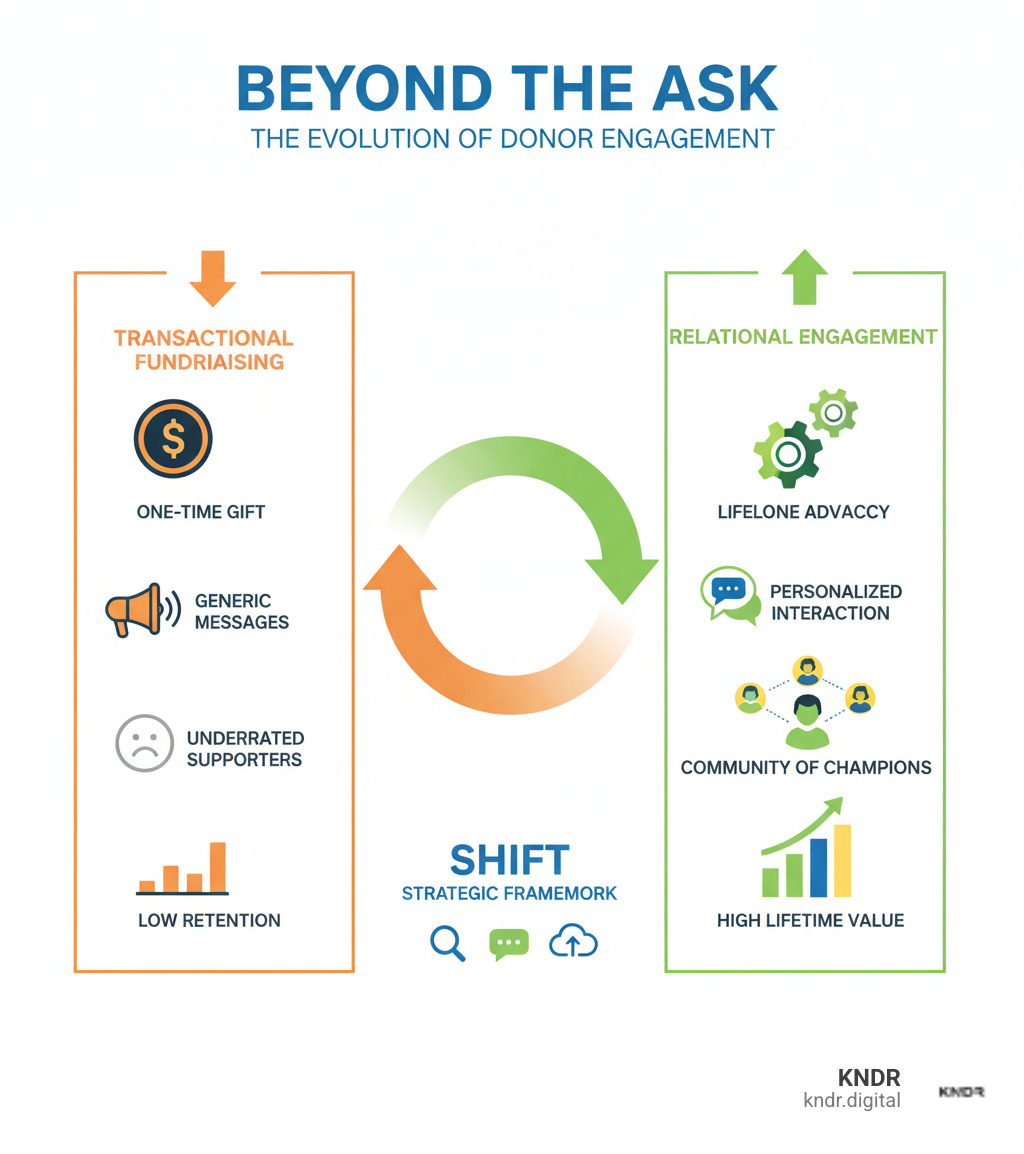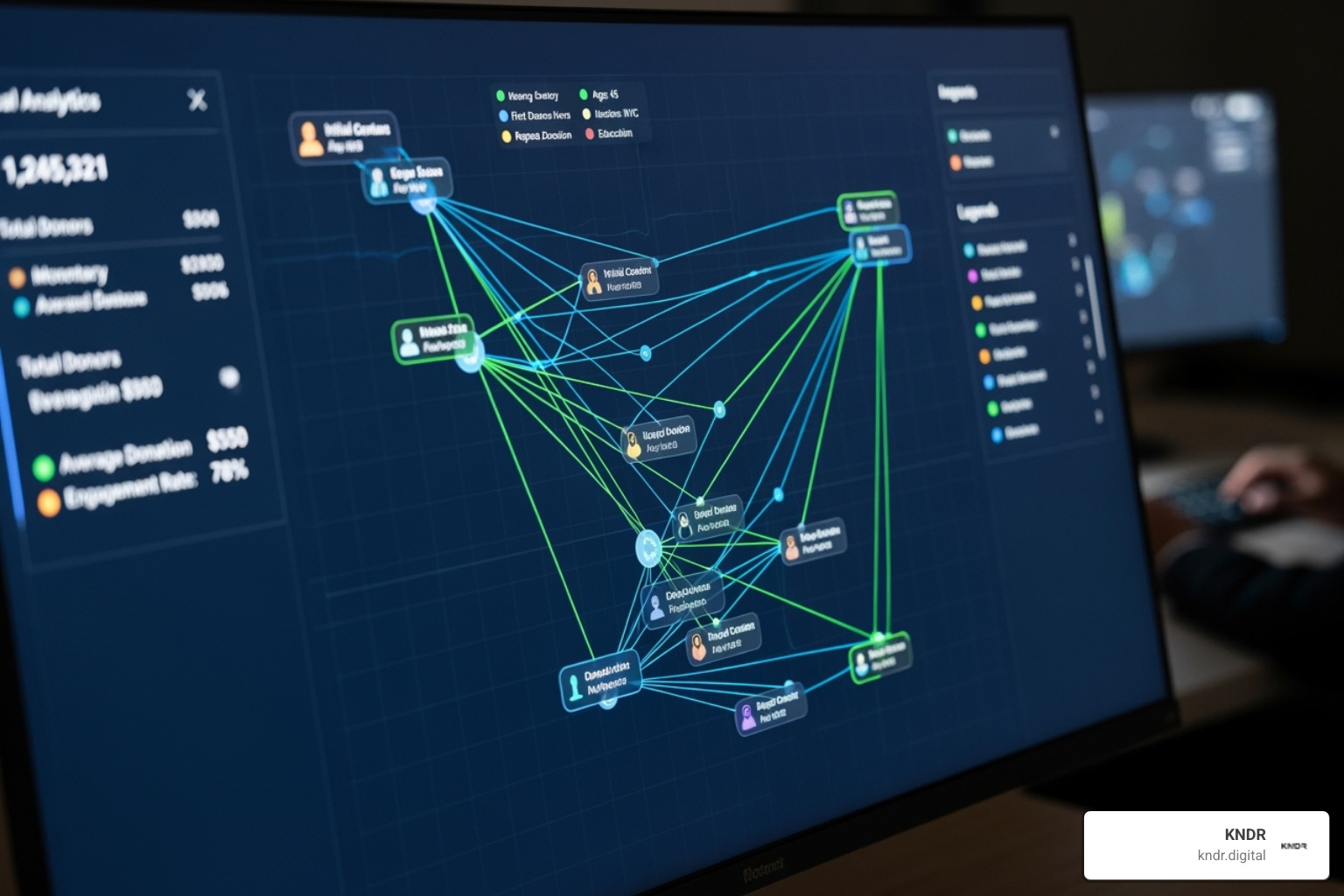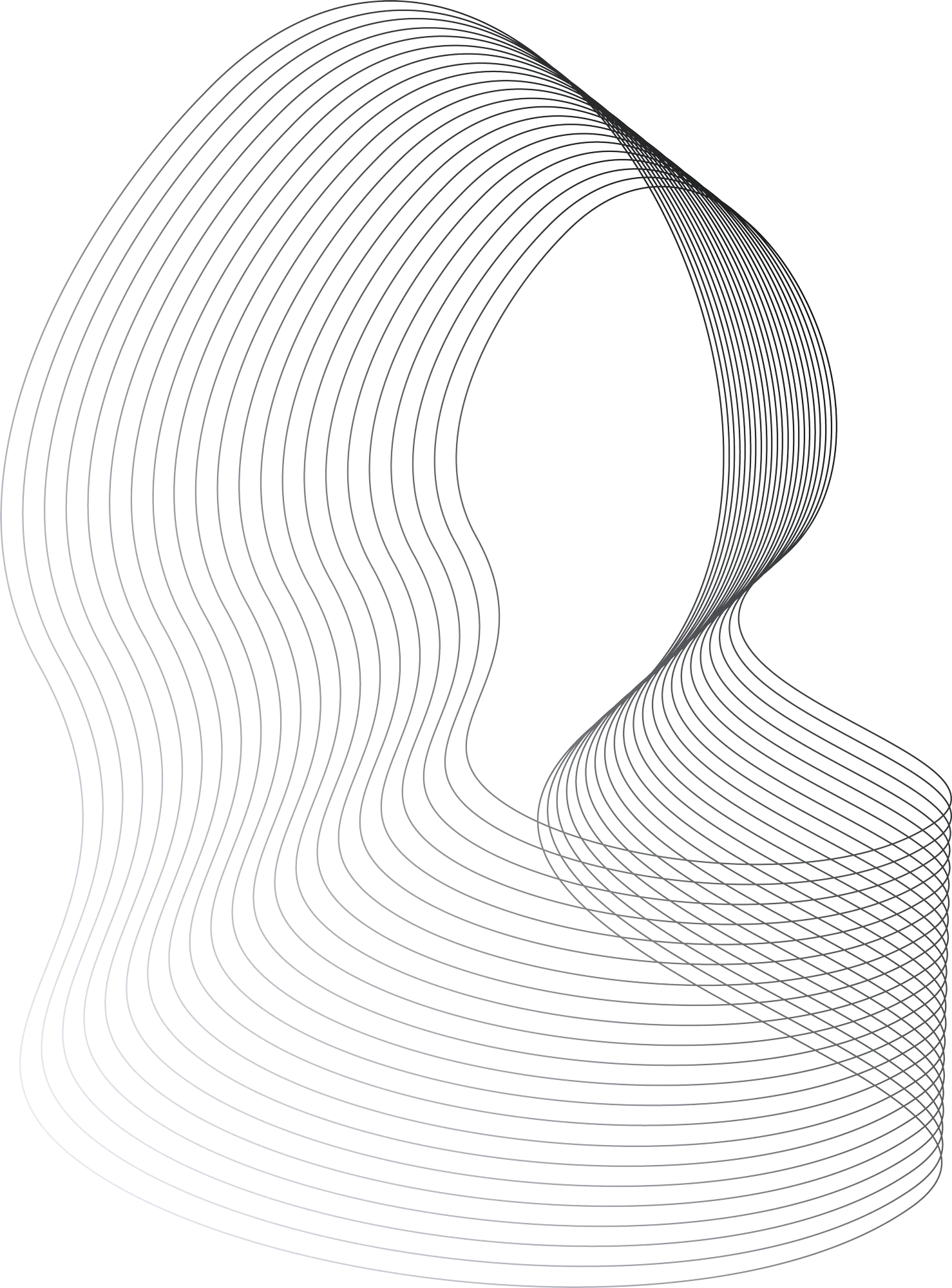Beyond the Ask: Engaging Donors Strategically

Why Strategic Donor Engagement Matters More Than Ever
Strategic donor engagement is a data-informed approach to building lasting relationships with supporters, moving beyond simply asking for money. It’s about understanding donor motivations and communicating in ways that inspire continued support and advocacy.
This strategy involves:
- Deeply understanding donors: Their values, motivations, and communication preferences.
- Personalizing interactions: From thank-you notes to impact updates.
- Using multiple touchpoints: Email, social media, calls, and meetings.
- Measuring and adapting: Tracking engagement to refine your approach.
- Building community: Making donors feel like partners in your mission.
Engaged donors are more responsive, volunteer more, and proudly share your mission. Yet, many nonprofits remain in "ask mode," using generic messages that leave supporters feeling undervalued. The shift to lifelong advocacy isn't complex. It requires a framework of research, personalized communication, technology, and appreciation. With 71% of consumers expecting personalization, organizations that invest in strategic engagement will see stronger retention and a community of champions.
I'm Mahir Iskender, founder and CEO of KNDR.digital. We help nonprofits implement AI-powered marketing and strategic donor engagement systems that turn supporters into lifelong advocates by prioritizing relationships and leveraging smart technology.

Relevant articles related to Strategic donor engagement:
- Nonprofit digital marketing
- Nonprofit marketing consultant
- digital marketing transformation consultant
The Foundation: Understanding and Segmenting Your Donors
Before you can connect meaningfully with supporters, you must understand who they are, what motivates them, and how they want to hear from you. This goes beyond contact information; it's about knowing their values and passions. It’s the difference between a generic "Dear Supporter" email and a message that resonates personally.

Engaged donors are more committed. They donate more, volunteer, and become advocates. But this doesn't happen by accident. The foundation of strategic donor engagement is understanding your donors and organizing them into meaningful groups to personalize communication.
How to Effectively Segment Your Donor Base
Segmentation allows you to make communications feel personal and relevant, even at scale. By grouping donors by shared characteristics, you can deliver the right message at the right time.
- Recency, Frequency, Monetary (RFM)) analysis is a powerful method that categorizes donors based on when they last gave, how often they give, and how much they contribute. A recent, frequent, high-value donor requires a different approach than a one-time, small-gift donor from years ago.
- Demographic segmentation (age, location, etc.) offers valuable insights. Younger donors might prefer social media, while older supporters may appreciate phone calls. Location can create a deeper connection to local impact stories.
- Psychographic segmentation explores the "why" behind giving. Understanding if donors are passionate about environmental justice or education helps you align your messaging with their core values.
- Engagement level tracks involvement beyond donations, such as event attendance or volunteering. This helps identify opportunities to deepen the relationship.
- Giving capacity helps identify supporters with the potential for major gifts, who often benefit from high-touch relationship building.
For a deeper dive, check out our guide on Donor Segmentation Best Practices. For AI-powered methods, explore The Complete Guide to AI-Powered Donor Segmentation.
The Core of Strategic Donor Engagement: Understanding Donor Motivations
People give to causes that reflect their identity and beliefs. Understanding this is key to building lasting relationships. Many donors feel like a wallet, receiving a generic thank-you and then silence until the next ask. To move beyond this transactional approach, you must uncover what drives your supporters.
- Conduct donor surveys: Short, well-crafted surveys can reveal what programs resonate most and how donors prefer to be contacted.
- Have personal conversations: A coffee meeting or phone call can uncover motivations and stories that surveys miss. It shows you care about them as individuals, not just as funding sources.
- Use social media listening: Pay attention to which posts get shared and commented on to learn what aspects of your work connect most deeply.
- Align with donor values: Weave what you learn into your communications. If a donor cares about education, highlight how your work advances that cause.
- Ask for feedback: Involving donors in your work by asking for their input makes them feel like true partners.
This approach, rooted in data and empathy, transforms fundraising into relationship building. For more, explore our guide to Data-Driven Fundraising.
Crafting Your Outreach: Communication, Personalization, and Storytelling
To cut through the noise of crowded inboxes and social feeds, your outreach must be authentic, relevant, and heartfelt. Strategic donor engagement means meeting donors where they are with the right messages at the right time. This requires a multi-channel approach that blends personalization with compelling storytelling. For a comprehensive look, explore our Nonprofit Donor Engagement Strategies.
Effective Communication Channels for Different Segments
Not all donors want to hear from you in the same way. Understanding their preferences is strategic. According to research from the Nonprofit Technology Network, different generations and donor segments have distinct communication preferences.
- In-person meetings are preferred by 51% of donors for meaningful engagement, making them invaluable for major donor cultivation.
- Email is the second choice at 32% preference. It's scalable and perfect for regular updates and thank-yous, but it must be personalized to be effective.
- Phone calls, preferred by 15%, are golden for thanking major donors, gathering feedback, or re-engaging lapsed supporters. Start with a conversation, not an ask.
- Text messaging has a low 2% preference, so use it sparingly for urgent updates like event reminders, and always with consent.
- Social media and direct mail complete the toolkit. Social media builds community and shares your mission broadly, while direct mail, especially handwritten notes, cuts through digital clutter.
The magic happens when these channels are synchronized into an integrated strategy. For more on optimizing digital channels, see our guide to Digital Fundraising for Charities.
The Power of Personalization and Storytelling
With 71% of consumers expecting personalization, generic communication is no longer an option. Real personalization means remembering a donor's history, tailoring content to their interests, and respecting their communication preferences. This shows you see them as individuals and builds trust.
Personalization is only half the equation; the other is storytelling. Numbers inform, but stories transform. Instead of saying you served 5,000 families, tell the story of one family whose life was changed. This humanizes your work and creates an emotional connection.
- Share beneficiary stories to put a face to the statistics.
- Demonstrate impact through narrative to show how donations create change.
- Create an emotional connection, which is a primary driver for giving.
Our Nonprofit Storytelling Framework: From Concept to Conversion can help you craft narratives that move people to action. By combining personalization with storytelling, you invite donors to be heroes in a mission they already care about.
The Role of Technology in Modern Donor Engagement
Technology is the engine that powers strategic donor engagement. It allows you to scale your efforts without losing the personal touch. Technology doesn't replace human connection; it amplifies it by providing the insights and time needed to engage thoughtfully.

Leveraging Technology for Strategic Donor Engagement
Smart nonprofits use technology to create a "360-degree donor view"—a complete picture of every supporter's journey. A good CRM (Donor Relationship Management) system provides this unified view, changing engagement from generic to personal.
- Automate personalized communications: Based on donor data, you can send a welcome series to new donors or custom updates to long-time supporters.
- Track every interaction: A CRM creates a rich timeline of engagement, from event attendance to website visits, allowing you to reach out at the right moment.
- Use AI-driven insights: Artificial intelligence can analyze data to predict which donors might upgrade their giving, identify the best communication channels, and suggest optimal send times.
- Create a seamless giving experience: AI can optimize your donation page, offer smart payment options, and use automated follow-ups to reduce donor abandonment.
For more on this, explore our guide to Implementing AI for Donor Retention: The Complete Playbook and our insights on Donor Relationship Management.
Beneficial Tools for a Modern Nonprofit
An effective tech stack supports your engagement goals. The key is choosing tools that integrate well.
- Donor Management Software (CRM): The central hub for all donor information.
- Email Marketing Platforms: For sending segmented campaigns and automated workflows.
- Social Media Management Tools: To maintain a consistent presence and monitor engagement.
- Analytics and Reporting Tools: To turn raw data into actionable insights.
- Online Donation Platforms: To make giving as frictionless as possible. Learn more at kndr.digital.
- AI-Powered Engagement Tools: For predictive analytics, chatbots, and personalized content generation.
For more on leveraging these tools, explore our guide on donor engagement best practices.
Building Your Strategic Donor Engagement Plan
A strategic donor engagement plan is a living cycle of nurturing relationships. It requires clear objectives and a commitment to consistent, personalized interactions. When donors feel engaged, they become committed partners, contributing their time, voice, and donations.

Navigating the Donor Engagement Cycle
The donor engagement cycle is a roadmap for continuous interaction. It expands on the "Ask, Thank, Report, Repeat" model.
- Identification: Find potential donors who align with your mission.
- Engagement: Make first contact to spark interest and start a conversation.
- Cultivation: Build the relationship through custom communication and experiences. Explore this in our guide on the Cultivation Cycle.
- Solicitation: Make a clear, compelling ask for support.
- Stewardship: Express gratitude, report on impact, and continue nurturing the relationship to turn one-time donors into lifelong supporters.
- Re-engagement: Reach out to lapsed donors with personalized messages to reconnect them to your mission.
The cycle then repeats as you deepen the relationship. This process is explored further in our Nonprofit Donor Engagement resource.
Key Components of a Comprehensive Plan
An effective plan requires several interconnected components.
- Set clear, measurable goals: Define what you want to achieve (e.g., increase donor retention by 15%).
- Define Key Performance Indicators (KPIs): Use metrics like retention rate, lifetime value, and email open rates to track progress.
- Create a communication calendar: Plan consistent, timely, and varied touchpoints to stay connected without overwhelming supporters.
- Prioritize donor appreciation: Prompt, personalized thank-yous show donors they are valued.
- Develop membership or loyalty programs: Incentivize recurring giving with exclusive benefits.
- Offer volunteer opportunities: Create a deeper connection by inviting donors to get involved hands-on.
By weaving these components together, you create a holistic plan. For more, see our guide on building Donor Relations.
Measuring Success and Fostering Trust
You can't improve what you don't measure, and you can't build relationships without trust. These two principles are the foundation of effective strategic donor engagement. We must know if our efforts are working and if donors trust us enough to continue their support.
How to Measure the Success of Your Strategies
Success in donor engagement goes beyond revenue. The real indicators are found in how relationships evolve.
- Donor retention rate: The percentage of supporters who give year after year. Acquiring a new donor can cost five times more than keeping an existing one.
- Lifetime value (LTV): The total estimated contribution a donor will make over time.
- Engagement metrics: Email open/click rates, website visits, event attendance, and social media interactions show how donors are interacting with you.
- Average gift size and upgrade rates: These indicate deepening trust and engagement.
- Volunteer hours: A clear indicator of commitment beyond financial support.
Analyzing these metrics regularly allows you to spot trends, celebrate wins, and pivot when strategies aren't working.
Building Trust Through Transparency and Appreciation
Trust is earned through consistent action. Donors entrust us with their money to fulfill a mission they believe in.
- Be transparent: Share detailed impact reports showing how contributions are used. Be honest not just about wins, but also about challenges. This shows you view supporters as partners.
- Show appreciation promptly and sincerely: A personalized thank-you, ideally within two days of a gift, reinforces a donor's value. Every gift, regardless of size, deserves acknowledgment.
- Offer public recognition: Featuring donors in newsletters or on social media (with permission) shows gratitude and inspires others.
- Maintain consistent branding: A steady voice and identity build comfort and confidence.
- Respond to mistakes with grace: Owning errors and communicating clearly can actually strengthen trust. Our guide on How to Engage with Donors After a Mistake offers guidance for these moments.
By weaving transparency and appreciation into every interaction, you build partnerships based on mutual respect.
Frequently Asked Questions about Strategic Donor Engagement
Many nonprofit leaders have similar questions about implementing strategic donor engagement. Here are practical answers to some of the most common ones.
How do you re-engage a lapsed donor?
A lapsed donor cared once and can care again. The key is a personal approach.
- Acknowledge their past support: Reference their last gift or a program they supported to show they are remembered.
- Share recent impact: Update them on what's happened since they last gave. Show them their past investment continued to create change.
- Align the ask with their interests: Invite them back to support something they previously showed a passion for.
- Reconnect before you ask: Invite them to an event or ask for feedback to rebuild the relationship first.
What are the biggest pitfalls to avoid in donor engagement?
Even well-intentioned organizations can make mistakes that push donors away.
- Contacting donors only for money: This makes them feel like ATMs. Balance asks with impact updates and thank-yous.
- Using a one-size-fits-all approach: With 71% of consumers expecting personalization, generic messages fall flat.
- Lacking transparency: Donors want to know their money is making a difference. Be open about finances, impact, and challenges.
- Failing to say thank you promptly: A delayed or impersonal acknowledgment is damaging. Thank every donor within two days.
- Having a clunky donation process: A difficult giving experience shows disrespect for a donor's time and generosity. Optimize your donation page.
How can a small nonprofit with limited resources implement these strategies?
Strategic engagement is about being smart and authentic, not having a huge budget.
- Prioritize key donor segments: Focus your limited time on your most loyal or high-potential supporters.
- Leverage free or low-cost technology: Many CRMs and email platforms offer affordable plans for nonprofits. For more strategies, see our Nonprofit Donor Engagement Strategies.
- Focus on authentic, personal communication: A handwritten note or a personal phone call can have more impact than a polished, expensive campaign.
- Empower volunteers: Train passionate volunteers to help with thank-you calls, note writing, and social media.
- Repurpose content: Create one great impact story and share it across your blog, social media, and emails to maximize your effort.
Conclusion
Strategic donor engagement isn't about asking for money; it's about building real relationships with people who share your mission. When we treat donors as partners—understanding their motivations, personalizing interactions, and showing their impact—one-time gifts become recurring support, and casual supporters become passionate advocates.
The future of fundraising is relational, not transactional. It demands authenticity, transparency, and a commitment to making every donor feel valued.
You don't have to do this alone. At KNDR, our AI-driven systems help you automate and scale engagement without losing the personal touch. We help you build stronger relationships, gain deeper insights, and exceed your fundraising goals.
We're so confident in our approach that we back it with a results-based model: we promise 800+ donations in 45 days, or you don't pay. We streamline your fundraising with advanced automation and holistic digital strategies that amplify the human element, not replace it.
Ready to transform how you connect with your donors? Learn how to transform your donor engagement strategy today and let's start building lifelong relationships together.


